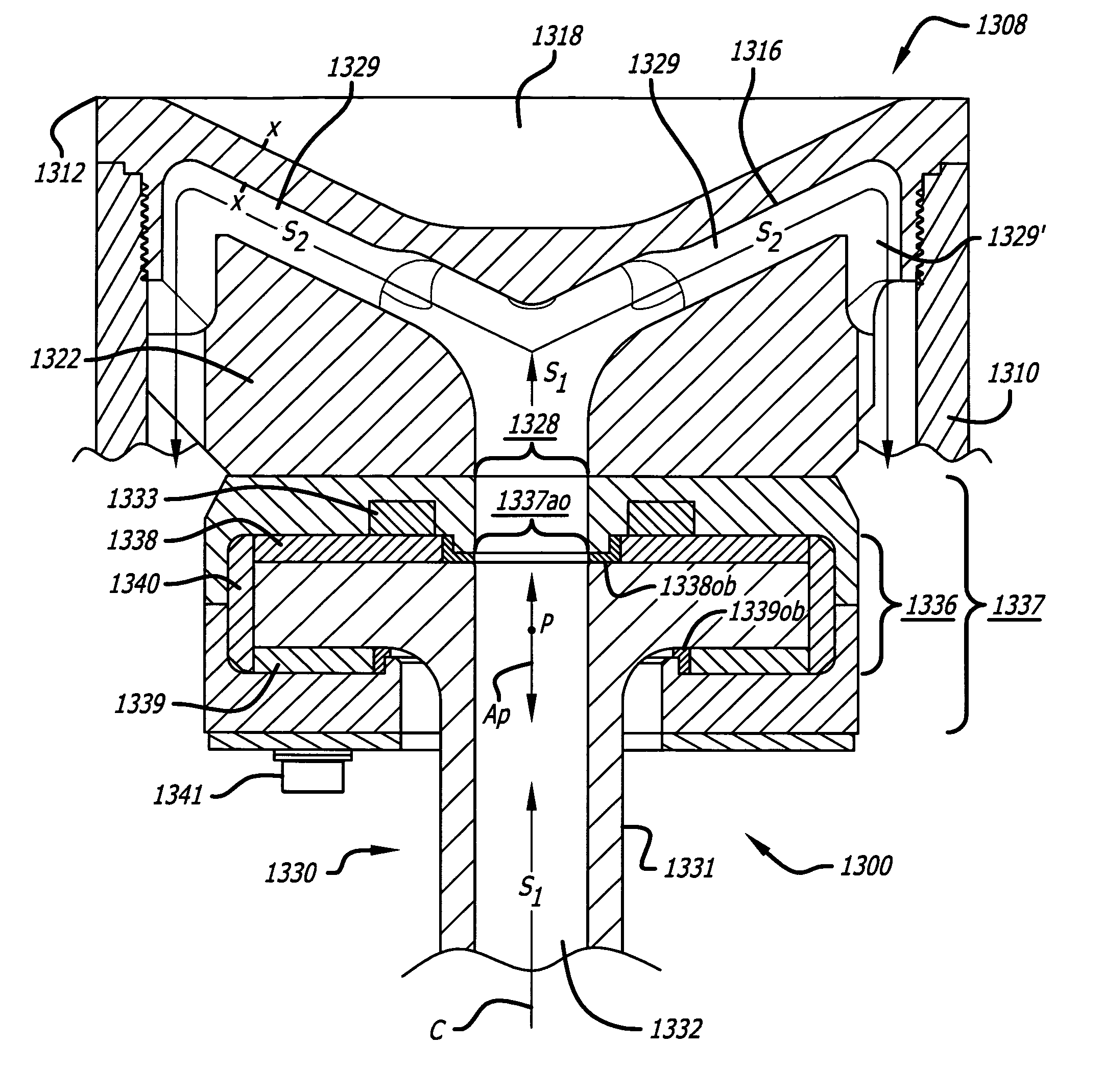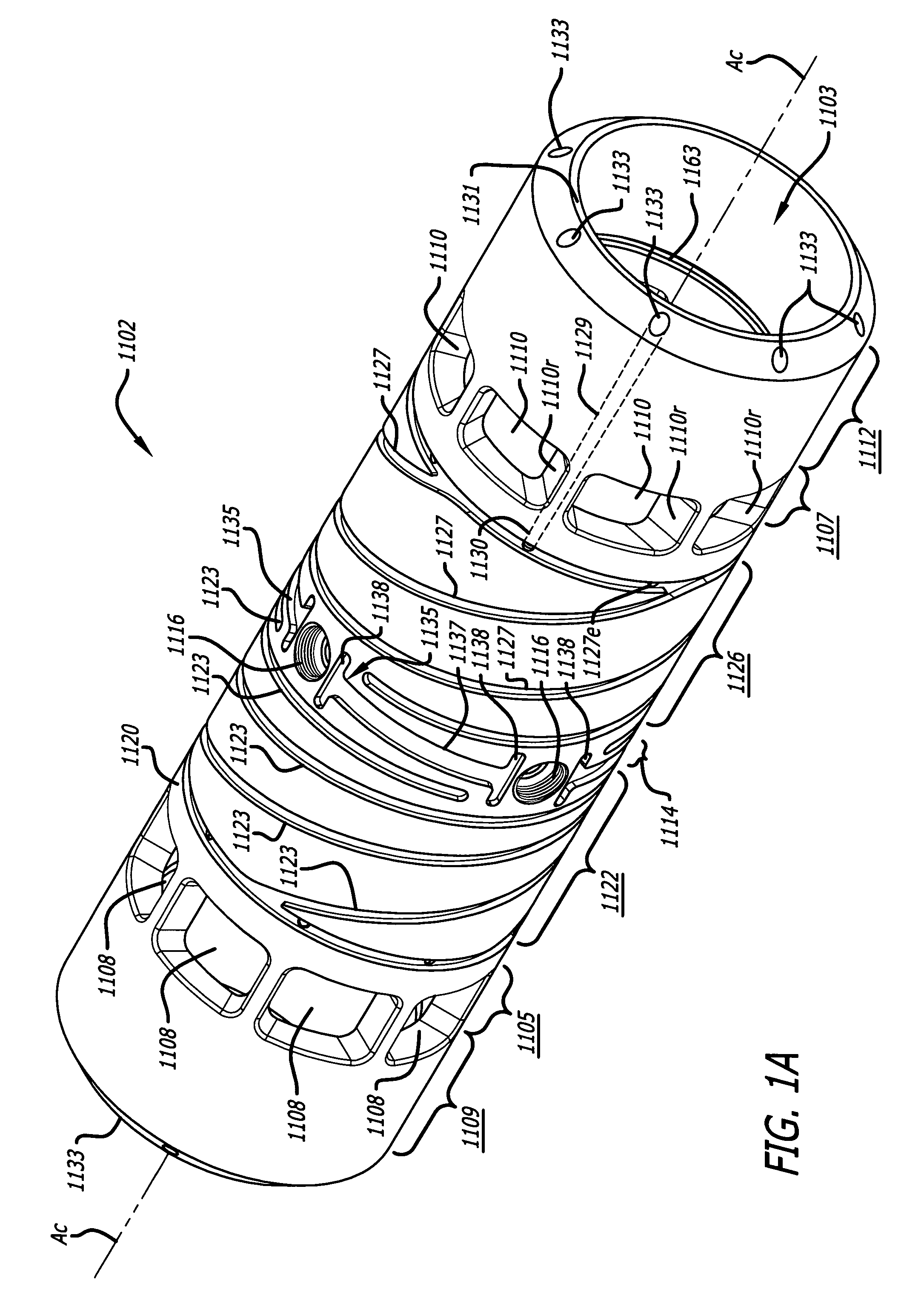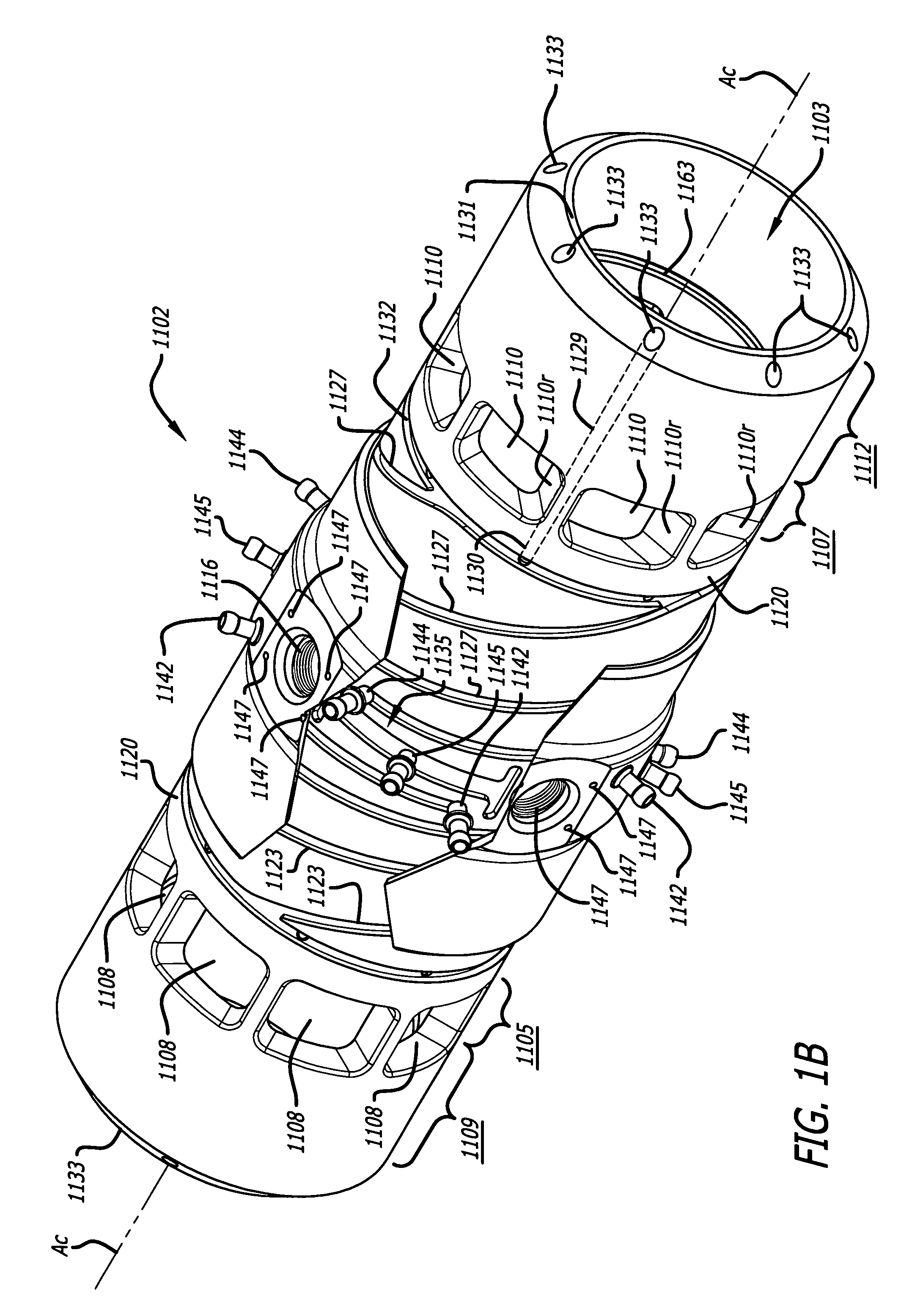Cylinder and piston assemblies for opposed piston engines
a technology of opposed pistons and pistons, which is applied in the direction of machines/engines, mechanical equipment, etc., can solve the problems of limiting the effective pressure of brakes, early failure of wristpins, and engine reachability
- Summary
- Abstract
- Description
- Claims
- Application Information
AI Technical Summary
Benefits of technology
Problems solved by technology
Method used
Image
Examples
Embodiment Construction
FIGS. 1A-1D illustrate a cylinder 1100 useable in an opposed piston internal-combustion engine. The cylinder 1100 has four parts: a cylinder liner 1102 formed as an open cylindrical tube with a cylindrical bore 1103, an exhaust manifold 1104, an inlet manifold 1106, and a cylinder sleeve 1140. Preferably, the cylinder 1100 is made from aluminum, such as a high-temperature aluminum alloy, and it may be cast or assembled by fixing the manifolds 1104 and 1106 to the cylinder sleeve 1140 and then fixing that subassembly to the outer surface of the cylinder liner 1102. The longitudinal axis Ac of the cylinder liner 1102 is also the longitudinal axis of the cylinder 1100.
As best seen in FIG. 1A, the cylinder liner 1102 has an exhaust port 1105 constituted of a series of circumferentially-spaced openings 1108 near an exhaust end 1109 of the cylinder liner 1102. The cylinder liner 1102 also has an inlet port 1107 constituted of a series of circumferentially-spaced openings 1110 near an inle...
PUM
 Login to View More
Login to View More Abstract
Description
Claims
Application Information
 Login to View More
Login to View More - R&D
- Intellectual Property
- Life Sciences
- Materials
- Tech Scout
- Unparalleled Data Quality
- Higher Quality Content
- 60% Fewer Hallucinations
Browse by: Latest US Patents, China's latest patents, Technical Efficacy Thesaurus, Application Domain, Technology Topic, Popular Technical Reports.
© 2025 PatSnap. All rights reserved.Legal|Privacy policy|Modern Slavery Act Transparency Statement|Sitemap|About US| Contact US: help@patsnap.com



